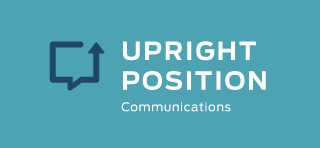What makes a good media list?
There are a few different opinions on media lists, but one thing is sure: the media landscape is contantly changing. Some PR teams like to “go big” and blast their announcements far and wide; others, like Upright, prefer a more targeted approach. While there are times spray and pray media pushes to huge lists can work, success happens more often when we reach out to reporters interested in what we’re sharing. Any PR firm with software subscriptions like Cision or Muck Rack can pull an extensive media list, but fine-tuning a list and reaching the right reporter at the right time takes finesse, research and asking the right questions.
- Have they covered similar stories?
- Are they still writing about the information you’re sharing? Journalists shift their beat and focus all the time.
- And, of course – is your story really news?
Targeted outreach is a better way to build relationships and earn respect from reporters. Pitching is a little like advertising. Imagine getting an ad about light fixtures when shopping for a new light versus getting tons of ads for kitty litter when you don’t even own a cat. The kitty litter ad is annoying, but the lighting ad may inspire you or help you find what you’re looking for. Now think about reporters receiving thousands of emails, most of which have nothing to do with the topics they cover. Relevance is vital in reaching the right reporter with the right story at the right time. The more you understand and fit the reporter’s needs, the better your odds of getting coverage.
How do you build a media list without a database service?
No budget for PR? Try researching on social media. Twitter and LinkedIn are top social sites for press and announcements. See who’s covering your competitors and who’s talking about your verticals, products and trends similar to yours. Some reporters actually prefer to be contacted via social media, especially when you follow them and get information from them.
We sometimes refer to topic research as professional stalking. Before you reach out to a reporter covering your space, do the research to understand what they’re writing about, what makes them tick, and what they’re passionate about. Read what they write, tweet, and post on LinkedIn. You’ll notice trends. They’ll reveal a lot of information, and you can reach out with what matters to them.
What if there’s no real news to share?
If you have a subject matter expert but no real story yet, consider making an introduction. Share that you don’t expect coverage but want to get the person on the reporter’s radar, especially if their expertise could be helpful later.
Creating your own content can be an excellent way to get your message out when you don’t have news reporters want. What can you share with your customers that would be helpful? What’s new or unique about your product? While it may not be news, this information could create a useful video or blog post for your target audience.
Finally, check out our Uptake post on eight traits to make your story newsworthy. You might get some ideas you haven’t thought about before.
Need help getting the word out?
Reach out to us at Uptake@Uprightcomms.com. We’d love to explore how we can work together to build media relationships and get your organization in the spotlight.
